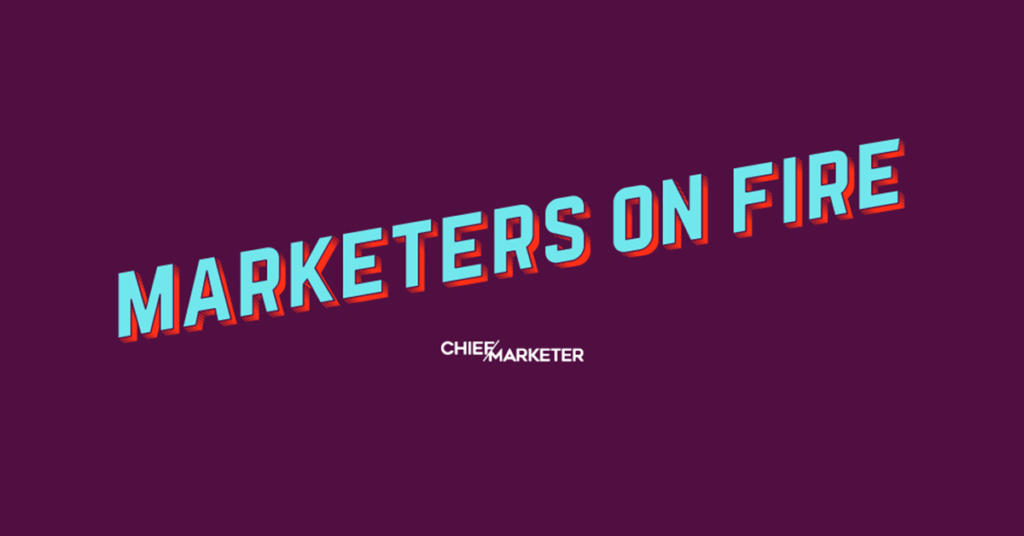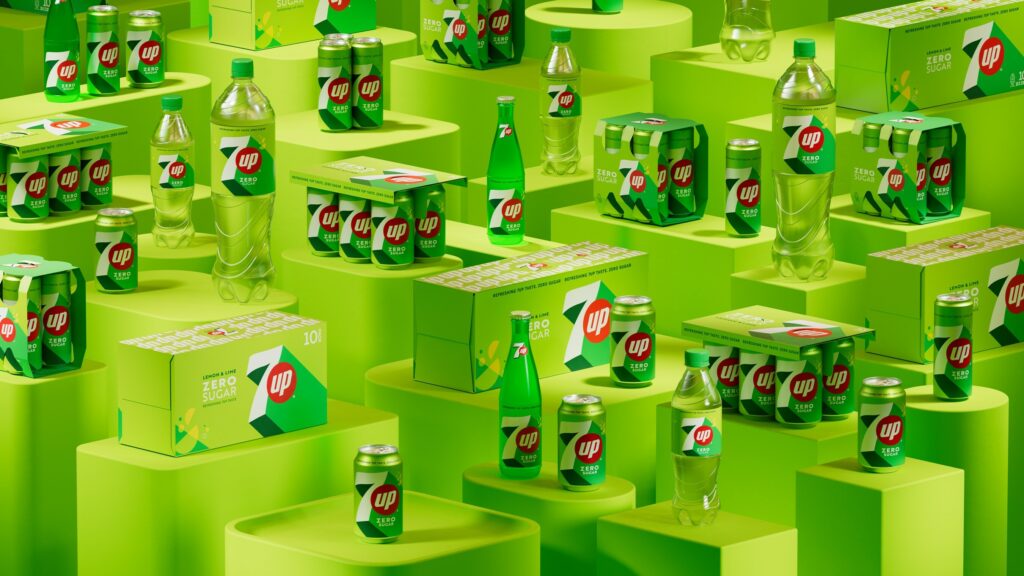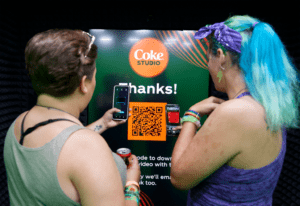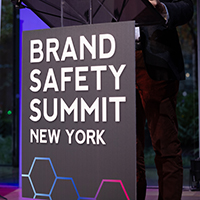Grassroots marketing is all about getting “brand in hand, in the context that makes sense,” Mark Kirkham, SVP and CMO of PepsiCo International Beverages, told Chief Marketer this week. But in sports marketing, including the work he’s doing for Gatorade’s 5V5 international girls soccer tournament, there is the potential to create a personalized, formative experience.
“It’s about starting young, working your way up, and providing both education and opportunity along the way,” he says. “Generically, some people just think grassroots is about sampling, or the lowest-level activation. But actually, grassroots should be seen as the base on which you build your funnel. It’s the base in which you create experiences. For some consumers, it’s the first time they interact with your brand or your product. That moment of truth is really important.”
Following is our conversation with Kirkham about recent campaigns for Gatorade and 7UP; the challenges facing global marketers today; how to achieve balance between global scale and local relevance; and the intricacies of restaging an iconic brand—in this case 7UP—through its new visual identity.
Chief Marketer: What are some of the challenges you face as a global marketer specifically?

Mark Kirkham, SVP and CMO of PepsiCo International Beverages: When you work in international, your portfolio is much more diverse. So, how do you build consistent brands that are locally relevant? One of the biggest challenges any global marketer has is finding that perfect balance between globally-scaled brands and locally-relevant brands and locally-relevant culture.
A best practice is putting the consumer at the center of it, and understanding that the consumer is different. There are also our universal truths, and they are what bind brands together, particularly as you think about how we bring the brand tone, expression and ethos to life. You really need to anchor it in something that’s universal. But locally, we’ll have nuances. In the past, there was more of a top-down approach to brand building when it came to global or international. Different cultures are a bit more homogeneous [today] because we have access to learn about different cultures and category dynamics. It requires marketers to think a little bit differently.
It requires us to think about how to be truly be scalable and true to what the brand stands for, but also be authentic and relevant at a local level, whether it’s talent or situation, occasion or cultural behaviors. All of those things have to come into play. You have to be comfortable with the fact that a truly global consumer isn’t one consumer. It’s actually lots of different consumers with a shared belief, a shared need, and ultimately being served by great global brands.
CM: Let’s talk about your Gatorade soccer initiative, 5V5. In 2022, the tournament for 14- to 16-year-olds was tied to the UEFA Women’s Champions League and was all-women for the first time. What was the strategy behind that choice?
MK: It’s been 26 years since Gatorade featured a female soccer player, in a Gatorade ad in 1997 featuring Mia Hamm in a Michael Jordan spot in the U.S. This was way before the momentum that came out of the World Cup in the U.S. around the women’s game. Gatorade was built in the U.S. and has expanded internationally over the last 20 or so years. The sport may be different, but the brand is the same. The focus on athletes is the same. But some of the things the U.S. may have done domestically have become more authentic to the world of sport and the world of brands.
And that is the women’s game. Gatorade 5V5 is an example. Gatorade outside the U.S. has been very focused on soccer for decades, as has been the case with Pepsi and others, because globally soccer is one of the biggest sports in the world, if not the biggest. The success of the U.S. women’s team and the investment being made in women’s football and women’s sports internationally has created this opportunity for brands to celebrate that.
The 5V5 program started out as a male-only program in many markets, but we have taken it to a whole different level. We’ve anchored it in our Champions League partnership, which also includes the Women’s Champions League. The last time we had a large-scale event pre-Covid, we had over 250 kids go to the UCL final and 56,000 kids involved in the program. And half of them were women’s teams. With 5V5, we extend our grassroots football programming and our passion for sport and ensure that we’re reinforcing that it’s an equal game.
 CM: What are the other aspects of the campaign that surround the 5V5 tournament itself?
CM: What are the other aspects of the campaign that surround the 5V5 tournament itself?
MK: The thing about 5V5, and any grassroots sport program, is that you’re going to have to reach consumers differently. We do a lot with social, particularly now with TikTok, and other platforms like Facebook prior to that. We recruit the players through general messaging, but we also leverage a lot of our sponsored athletes as well as the club partnerships we have. We are using talent and partnerships not just for traditional sponsorship and awareness, but actually recruitment, almost as ambassadors to get people involved in sport. And that’s something we’ve done for years. Brands that play in this space have to use talented athletes not just as ambassadors, but also as advocates and influencers to get people active into sport.
CM: How are you defining a grassroots marketing campaign? Do you have any best practices?
MK: Grassroots as a generic word is all about getting brand in hand, and in the context where it makes sense. So whether you’re sampling potato chips or soft drinks, or actually in our case Gatorade, trying to bring the benefits of a Gatorade for hydration and athletic performance onto a pitch or a sideline, the base principle is you’ve got to find a way to authentically and relevantly put your product into their hands. When you think about formative experience in sport, it’s a very different thing. It’s about starting young, working your way up, and providing both education and opportunity along the way. So for marketers thinking about grassroots, generically some people just think it’s about sampling, or the lowest-level activation.
But actually, grassroots should be seen as the base on which you build your funnel. It’s the base on which you create experiences. For some consumers, it’s the first time they interact with your brand or your product. That moment of truth is really important. And if you do it in a super authentic way, tied to something someone’s passionate about, you can actually create a fan for life. Grassroots is about branding and sampling—all of those table stakes—but it’s actually about the experience. And in sport, the experience is everything.
Grassroots is in many ways about a personal experience. It’s about a chance to try something new in some cases, but it’s also a chance for brands to reaffirm their role in a consumer’s life, or in the case of sport, it’s almost part of that formative experience, from being a young athlete to ultimately being a competitive and maybe a professional athlete in some cases.
CM: That’s a great point. Personally, my first memories of Gatorade were from when I played soccer as a kid.
MK: I’ll just build on that: I grew up in the U.S., and when I was a kid, if I didn’t show up on the pitch or on the sidelines or at practice with a Gatorade, I felt like I wasn’t like wearing my cleats, or I wasn’t prepared for the game. In other parts of the world, that behavior that was endemic to the sports drink market in the U.S. didn’t exist. So at the same time, we also have to educate people about the importance of hydration and the role that products like Gatorade play. That’s why we use the GSSI, the Gatorade Sports Science Institute. We actually bring some of our GSSI scientists and PhDs to our 5V5 program to help them understand the importance of nutrition and hydration.
So not only are they there to participate in a tournament, but they’re actually [learning] valuable lessons on young athletes. It’s different for sport; it’s all about the experience. And like you said, when you first experience certain brands at certain times in your life, it actually leaves a mark. And our goal is to leave a mark that has meaning.
CM: Switching gears a bit, let’s talk about the 7UP rebrand you just launched, which is the first in seven years.
MK: We operate 7UP in about a hundred markets around the world, and this is an iconic brand for so many people. So when you restage your brand, you’ve got to be really thoughtful. I’d go as far as to say careful. Because it’s not just about design and aesthetic and packaging. It’s about what a visual identity means to an individual and how they’ve grown up with it.
For 7UP, this was a really important moment, because brands that have stature and really rich, deep roots with their fans as well as in culture need to have certain things that stay the same—but you also need to grow and evolve. This rebrand was about upliftment, so we spent a lot of time and thought about what makes 7UP great. You can talk about product characteristics, like bubbles and amazing lemon-lime flavor, but actually it’s that feeling of, physically and emotionally, being uplifted when you have a refreshing drink.
Then we worked with our design team and took inspiration from the existing category, but also looking other categories. What are the visual cues that can take you to an uplifted place? We’ve done that through design aesthetic, through color, through broader imagery. If you look at the packaging itself, it feels more modern. It brings to life movement, upward motion and ultimately upliftment visually. But at the same time, it’s still got that iconic 7 and that red UP, which will let anyone—old or young—look at that and say, that’s their 7UP.
In our category, it’s about bringing new users in and also making the existing users feel really excited about what we’re doing with the brand. That’s at the core. The more iconic the brand, the more important it is to actually look at your consumer and understand its role in different markets—and not lose the essence.
CM: How are you communicating the rebrand to the public?
MK: We’re going to continue to leverage digital as a major channel. We’re using our visual identity to refresh the visual experience. Sometimes over time, your packaging, graphics, identity—people just get used to it, and it becomes commonplace. And the moment you bring something new and different, it actually changes perception. So, bringing that visual identity through life, through digital, through out-of-home home, through campaigns, is going to be really important. And then the tone and the manner in which that will come across. We’re going to be in over 76 markets this year with this rebrand, and that’s going to come to life in locally-relevant ways, and moments where you’re uplifted amongst friends and family.
CM: In terms of marketing trends, what are you keeping an eye on this year? What should other marketers be paying attention to?
MK: First and foremost, you should always be looking at your consumer. I would warn all of us not to get too focused on shiny objects, and this includes technologies and other trends like that. That being said, if you can see how our consumers are evolving through new technologies and new tools, you [can] make sure you’re relevant. The role of technology, the role of Web3, the role of AI—it matters. The bigger question is, what do you do with it? The role of technology is enabling more personalized relationships with consumers where they’re having an impact on your brand and guiding you on how to tell your story and how to bring them into it.
I’m not a big fan of the word metaverse, because I don’t think anyone can really tell you what it is. I am a fan of how people embracing the technology will change how brands engage consumers. So whether it’s putting your brand into a gaming environment or a ROBLOX environment or a streaming environment that’s got augmented reality, it’s the evolution of the media that we had 20, 30 years ago, but in an entirely new context. Ultimately, it’s just a new way of marketing. It gives you data and it gives you the ability to do transactions of commerce.
And I think that at the end of the day, AI can make us smarter. It can make us more creative and it can make us challenge ourselves, because data is now at the point where it can help us almost predict or respond to things that are happening in real life. And as marketers, we need to see that as just one other input into the creative process. The risk is that people see it as the creative process. You’ve seen examples of brands who have used ChatGPT to tell their own stories. It’s amazing. But what that technology can’t do is bring the emotive heart, soul and the overall purpose of a brand to life.





 Network
Network

